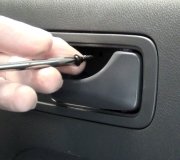I just purchased a used car for around $2000. It seemed to be in excellent condition, and I bought it from a reliable owner.
I drove with him for about 30 minutes in the car and the car drove well. At one point when we were at a red light, I felt and heard a very slight vibration coming from the drivers side door. I asked the owner what the noise was from and he told me that it was normal from that car and is the transmission. He showed me that when he switched gears (I think to neutral) the vibration went away.
I purchased the car, and drove it for about an hour on the highway. When I stopped at a red light at one point, I was not able to continue driving in D at all. I switched to 1 and was able to slowly drive. The car was making noises and almost shaking.
I let it sit for a few minutes. At one point, it would not drive at all in D, R, 1 or 2. Now it seems to work a little bit but I am afraid to drive it so as not to cause any further damage.
Do you think that this is a transmission issue? If yes, is there any way to determine if this was an issue that existed before or if it just lucked out on me on my first drive?
I want to point out that I found out that the speedometer only clocks up to 80 km. I was not aware of this while I was driving. At one point while I was going up a steep incline, I thought I was only going 80 and could not get it to go any faster by giving gas (or so I thought), so I switched to 2. When I did this the car made a real loud revving sound which sounded like I was straining the car, so I switched back. If I was really going 120 up an incline (possible) and switched to 2, could that of caused damage to a healthy transmission, or only to a sick one?
Is there any way for me to determine that this issue is a transmission related issue and not something else?
SPONSORED LINKS
Saturday, January 16th, 2010 AT 2:01 PM



